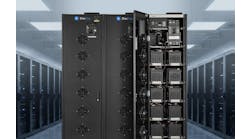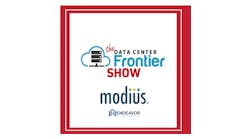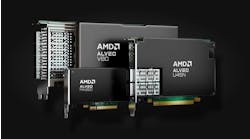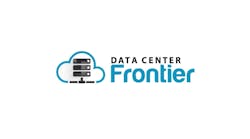New Demands on Your Chilled Water Operations: What You Need to Know
Summer temperatures have become increasingly hotter, placing unprecedented demand on and straining data center chilled water operations in several ways:
- Increased cooling demand: Chilled water system equipment must work harder and longer to provide adequate cooling; warmer weather patterns also extend the cooling season, requiring data centers to run their chilled water systems for more months of the year than before.
- Humidity challenges: Increased humidity levels complicate the cooling process, requiring greater energy use for dehumidification.
- Increased maintenance needs: The above combination can lead to faster wear and tear on equipment, the potential for downtime and disrupted operations, and an increased need for maintenance and service.
An additional factor to consider is the proliferation of server racks used to process generative AI models and Machine Learning. As more data centers are installing server racks to perform these computationally-intensive functions, the demand for substantial amounts of energy and cooling to operate increases. This increase in power consumption and rack density directly affects data center cooling requirements, as the additional workload generates more heat. Operators must determine where the additional cooling capacity is coming from to maintain environmental conditions to cool the processors.
For data center operators, all of this presents an acute challenge: maintaining optimal operating conditions and ensuring the reliability of critical systems while also coping with rising energy costs. Because cooling operations already account for a significant portion of a data center’s energy consumption, optimizing and properly maintaining chilled water systems has never been more important.
Optimizing chilled water system performance increases cooling capacity and system efficiency
Although aging, overworked chilled water systems struggle to keep pace with hotter, more humid conditions and can fail unexpectedly, the capital outlay required to procure a new, more efficient chiller can be prohibitive. This has prompted data center operators to seek out ways to extend the life of their current systems and maximize their current cooling capacity to avoid costly new chiller installations. For many, this means turning to the Demand Flow chilled water optimization strategy.
Siemens’ Demand Flow offers a powerful, proven, and patented solution to optimizing chilled water system performance, efficiency, reliability, and – importantly – cooling capacity. By intelligently optimizing chiller sequencing and implementing variable speed control for pumps and cooling tower fans, Demand Flow boosts cooling capacity without requiring new chillers, enabling data centers to get more out of their current systems.
Enhancing cooling capacity with existing chilled water system equipment
In a data center environment, an optimized chilled water system with increased cooling capacity will be able to accommodate the additional heat generated by AI workloads while also offsetting the increased power usage via variable speed controls and intelligent sequencing. For instance, one large financial data center customer with four 1300-ton chillers implemented Demand Flow to ultimately achieve N+3 capacity while reducing energy consumption by 39%, or approximately 2.6 million kilowatt hours.
Another financial data center, located in the Northeast U.S., relied on water side economizers to cool their facility when the weather allowed. This approach was already highly efficient, and after implementing Demand Flow, this data center achieved a 10 to 1 reduction in energy use, even without the addition of chillers. As the facility migrates off this platform, chillers can now run in parallel because the water side economizers and heat exchangers run so efficiently.
Other data centers have found that implementing Demand Flow has drastically reduced surging on chillers (in one case, from 3,200 surges per year to just six), increasing the reliability of the chillers themselves and helping chilled water systems to run smoothly throughout their range.
Ultimately, the combination of increased AI workloads and hotter temperatures will continue to challenge traditional chilled water operations; adopting new, energy-efficient optimization strategies like Demand Flow can enhance cooling capacity, redundancy, and reliability within existing systems without resorting to expensive capital investments in new chillers. Learn more about Demand Flow for data centers here.

Richard Anderson
Richard Anderson is the National Sales Manager for Data Centers at Siemens Smart Infrastructure. Since 2019, he has been an enabler for data centers and mission-critical IT environments to enhance transparency, optimize operations, and ensure resiliency and reliability through innovative, operational technologies. Within his tenure at Siemens, Richard has held various roles, including web developer, international delegate, and marketing manager. Richard is an MBA candidate at the University of Illinois Urbana-Champaign and holds a BSBA in IT Management from Western Governors University.






